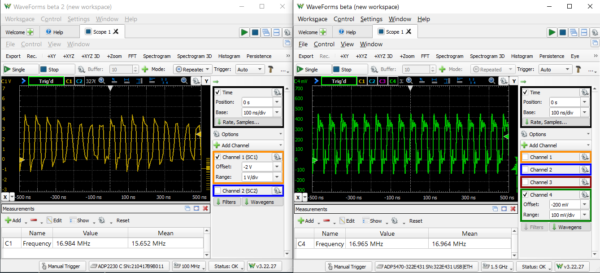With the two new entries into the ADP 5000 Series of devices, Digilent now has six different products with the ‘Analog Discovery Pro’ moniker across three families — double the number of devices in the Analog Discovery Essentials family, which all have their own unique capabilities. Can the same be said for the Pro devices? How do you choose between them?
In broad strokes as of August 2024, the distinguishing technical factors between the three Analog Discovery Pro families are as follows:
2000 Series — USB 3.0 speeds
3000 Series — Embedded Linux capability
5000 Series — Fastest and highest bandwidth oscilloscope
Okay great, but why would you want any of these highlighted features?
USB 3.0 speed of the Analog Discovery Pro 2230 allows for the fastest continuous streaming of data back to the host computer, even faster than a gigabit Ethernet connection. But simply slapping on a USB 3.0 chip doesn’t make this work; you also need a deep memory buffer to hold the deluge of incoming data while USB completes its various handshake transactions. That’s why the Analog Discovery Pro 2230 can hold over 100 million samples each of analog and digital data so you can stream billions of raw data points at blistering rates.
Embedded Linux on the Analog Discovery Pro 3000 Series devices is the most versatile out of the three factors. Run your device headless? The ability to connect to a device and run a test from a different continent? And the flexibility to use that extra memory as a deep memory buffer when you are next to the device in person? Yes, please.
That leaves us with the “fastest and highest bandwidth oscilloscope”, aka the most advertised specification for any oscilloscope. You might think that the 50+ MHz of bandwidth on the ADP2230 and the ADP 3000 Series devices is plenty for a lot of applications and you would be right…until you try to measure a 17 MHz clock signal and realize you need a faster sampling frequency.

Of course, these unique features for each Series family aren’t the only thing these devices can do. Find out more on each of their dedicated pages: Analog Discovery Pro 2000 Series, 3000 Series, 5000 Series.
As a fun aside you might notice there is room for a 4000 Series family. That’s interesting, isn’t it?

